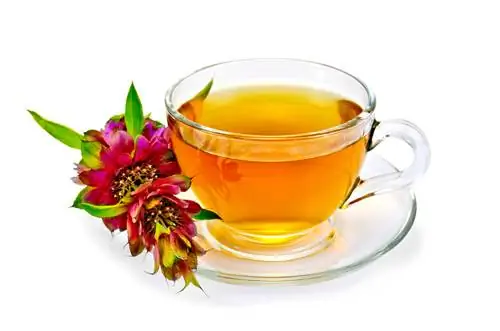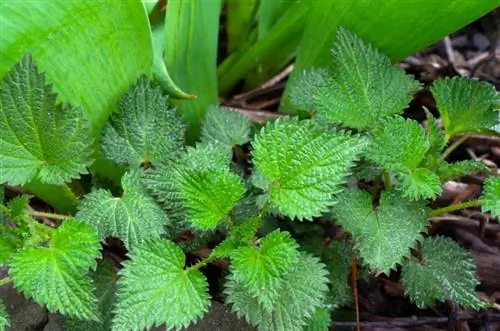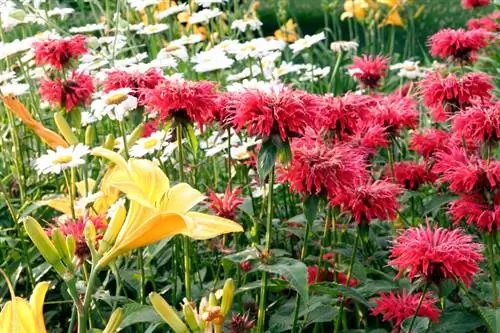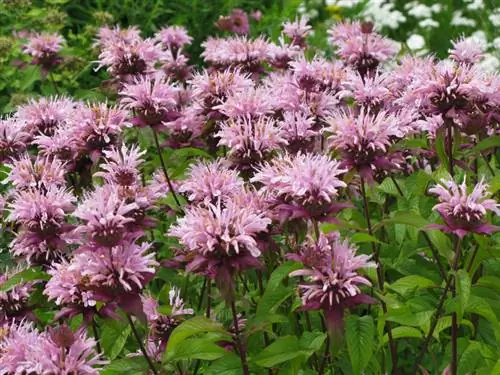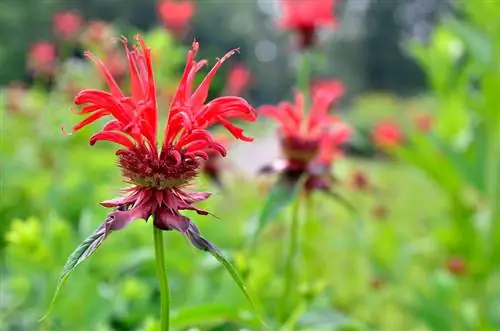- Author admin [email protected].
- Public 2023-12-16 16:46.
- Last modified 2025-06-01 06:02.
The Indian nettle is known by many names, with the names “golden balm” being used primarily for the species Monarda didyma and “wild bergamot” for Monarda fistulosa. This mainly has to do with the different fragrances, because while golden balm exudes a more citrus-like smell, wild bergamot has a spicy scent of oregano and bergamot. Leaves and flowers of both types are ideal for making tasty and healing teas.
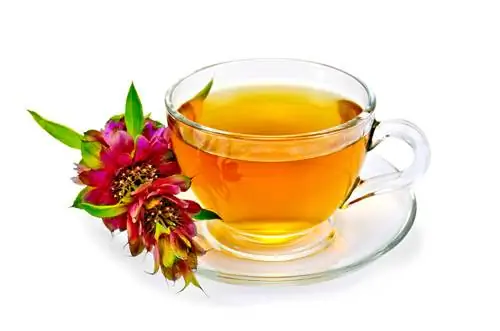
What is Indian nettle tea good for and how do you prepare it?
Indian nettle tea can help with colds, coughs, respiratory problems, fever, nervousness, sleep disorders, headaches and digestive problems. Preparation: Pour 150 ml of boiling water over 1 teaspoon of dried or 2 teaspoons of fresh flowers and leaves, let it steep for 5-10 minutes and strain.
Oswego tea - the tea of the Native Americans
The Indian nettle (Monarda in Latin) was described as early as the 16th century by the Spanish American traveler, doctor and botanist Nicolàs Monardes - after whom the plant was ultimately named. He also mentioned the healing properties of the so-called Oswego tea, which the Native Americans made from the leaves and flowers of the intensely fragrant perennial. Indian nettle tea has been drunk for many centuries, not only by Indians, but since around the 18th century. Century, after the plant was introduced, also in Europe.
Ingredients and Use
Monards contain essential oils similar to thyme and can therefore be used in a similar way to thyme. An infusion or syrup can be used both internally (tea, syrup) and externally (baths, compresses, washings), especially against the following symptoms:
- Colds, coughs, bronchial diseases
- for stuck mucus in the respiratory tract
- for fever (sweaty)
- for nervousness and restlessness (calming)
- for difficulty falling asleep
- against headaches
- for digestive problems and flatulence
Cut clean, he althy and dry flowers and leaves on a sunny morning if possible, but not too early - otherwise the plant parts will still be damp from the morning dew and no longer suitable for drying. It is best to dry the Indian nettle lying down or, as a whole plant, hanging upside down in a dark, warm and airy place.
Prepare Indian nettle tea
To prepare Indian nettle tea, take either two teaspoons of fresh or one teaspoon of dried flowers and leaves and pour 150 milliliters of boiling water over them. Let the brew steep for about five to ten minutes and then strain it.
Tip
A golden balm syrup can be used especially for coughs and as an expectorant. To do this, dissolve 500 grams of sugar in half a liter of boiling water and add the juice of two to three lemons. Pour the sugar broth over around 20 freshly harvested Indian nettle flowers and let the mixture steep in a dark place for two days. Now you can strain the syrup and bottle it.

